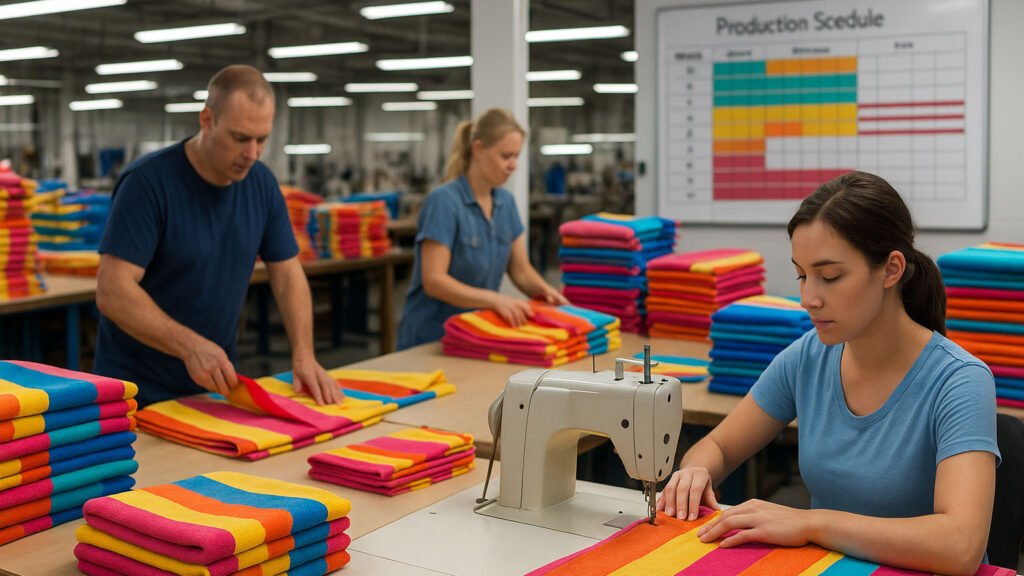
Ever wondered what goes on behind the scenes before a beach towel lands in your hands? Let me take you through the journey from yarn to your doorstep.
The beach towel production process typically takes 16 to 28 days, covering everything from yarn prep to final packaging. Each stage—like weaving, dyeing, and sewing—has its own timeline. Factories plan this flow like clockwork, especially when juggling bulk orders or custom designs. Understanding this timeline helps me keep projects on track and avoid delays.
Every towel starts with a thread—and a timeline.
Yarn Preparation (1–3 Days)
It all begins with cotton and a spin.
This step involves sourcing raw cotton, spinning it into yarn, and preparing it for weaving. Some factories keep yarn in stock for standard products, but custom orders may require fresh spinning, which adds time.
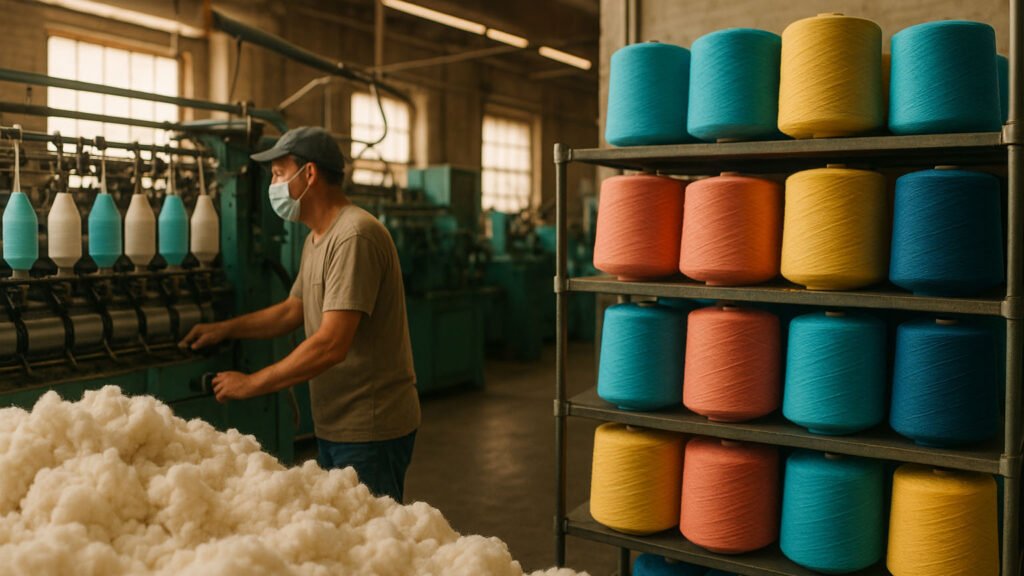
Why this stage matters:
Better yarn = better towels. I once rushed an order with low-grade yarn—it looked fine, but the softness and absorbency were just not there. Learned my lesson.
| Process | Purpose |
|---|---|
| Cotton Sourcing | Ensures fiber quality |
| Spinning | Twists fibers into usable yarn |
| Cleaning | Removes impurities, improves dye uptake |
Warping & Sizing (2–4 Days)
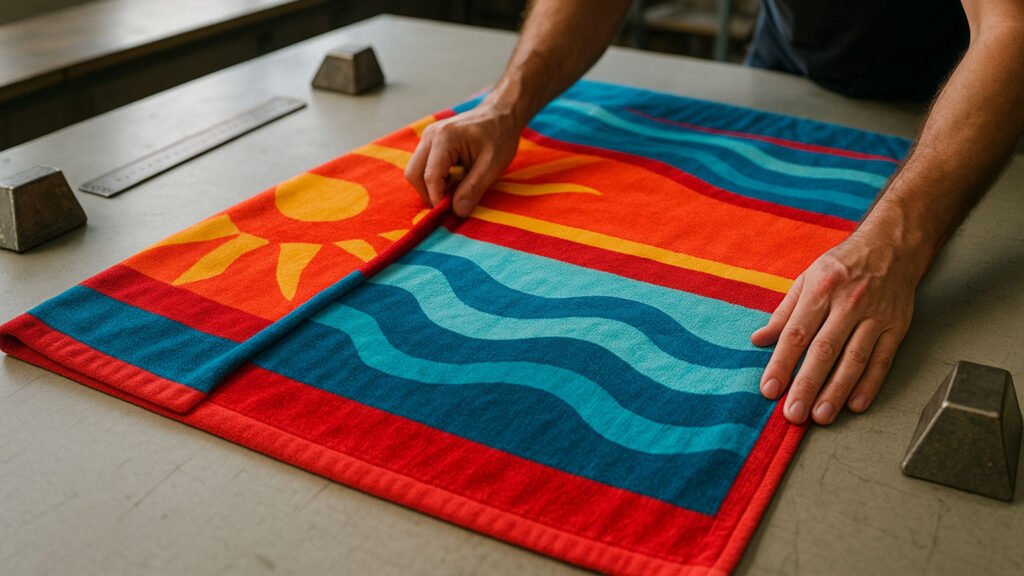
This part’s like setting up a big puzzle.
Warping aligns yarn into the correct order for weaving, and sizing adds strength to the yarn to prevent breakage. It's a crucial setup stage before any weaving can start.
Don’t overlook it:
For custom patterns, warping can take longer. I once ordered a towel with a unique stripe design—looked great, but the setup took nearly 4 days alone.
Weaving (3–5 Days)
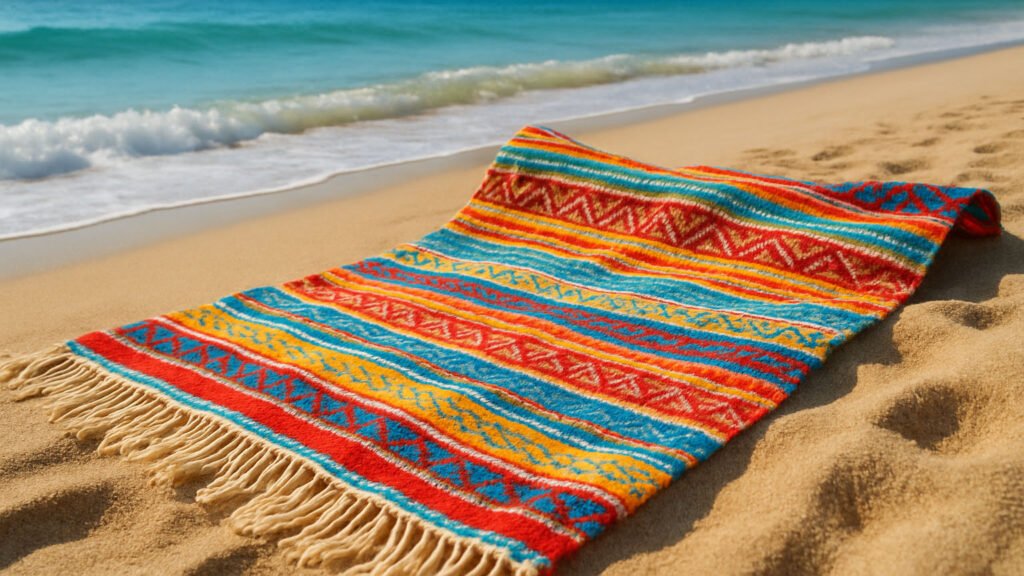
Now it starts to look like a towel.
This is when the towel fabric is actually created—loop by loop—on weaving machines. Jacquard patterns or multi-colored designs usually require more time.
Key takeaway:
Simple designs weave faster. I tend to balance creativity with production speed when planning a new product line. No need for a Picasso when a clean stripe will do.
Dyeing & Printing (5–7 Days)
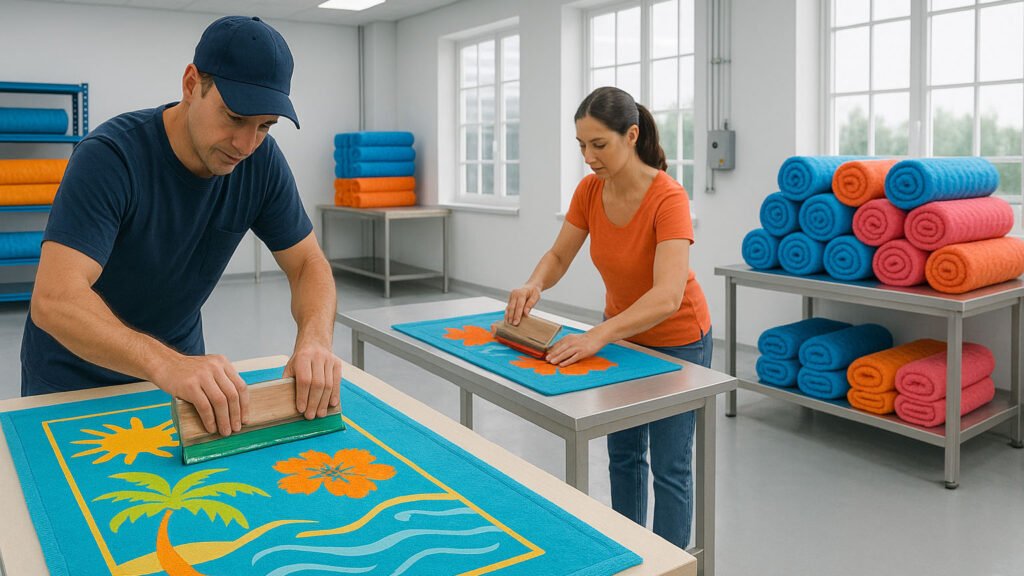
Here’s where color brings life to your brand.
Depending on the method—reactive dye, pigment print, or digital printing—this stage can take up to a week. The more complex the design, the longer the curing and drying times.
| Method | Best For | Time |
|---|---|---|
| Reactive Dye | Deep colors, durability | ⏳⏳⏳ |
| Pigment Print | Cost-effective, solid shades | ⏳⏳ |
| Digital Print | Intricate, colorful designs | ⏳⏳⏳ |
Insider tip:
Digital prints pop, but they’re time-hungry. I only use them for small batch or special edition towels.
Cutting & Sewing (2–3 Days)
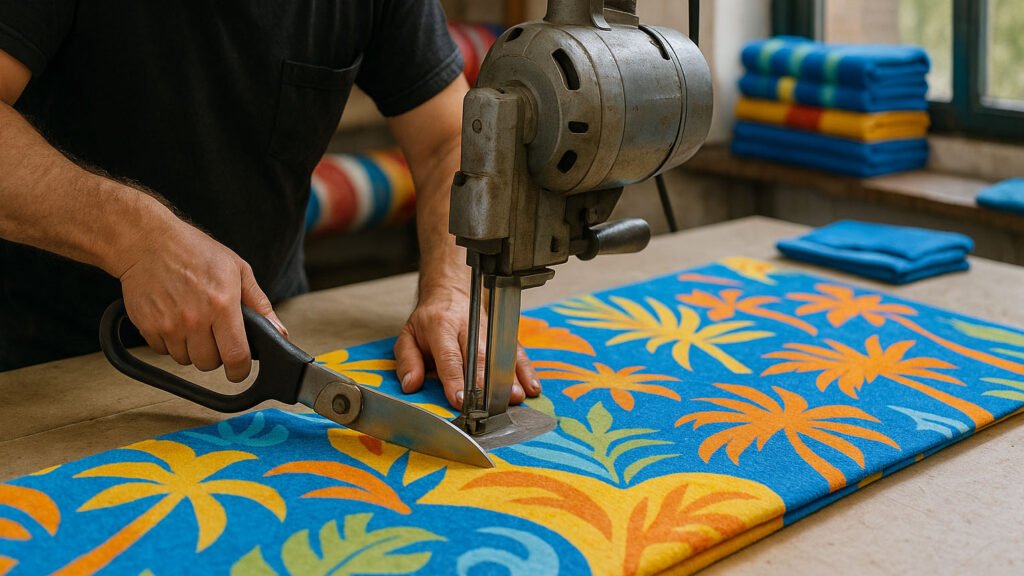
Fabric becomes a product.
This is when towel rolls get cut to size, labels sewn, hems stitched, and edges cleaned. If you're adding details like hoods, pockets, or tassels, this step takes longer.
What I’ve seen:
It’s fast, but if stitching isn’t checked properly, defects slip through. Always good to ask the factory for pre-shipment photos.
Quality Control (1–2 Days)

Trust, but verify.
Every towel goes through inspection—checking size, stitching, print quality, and even shrinkage. Some clients even hire third-party inspectors for bulk orders.
Why this matters:
It’s the difference between happy reviews and returns. I’ve been burned before by skipping this on a rush job.
Packaging & Shipping (2–4 Days)

Last mile, big impact.
Towels are folded, packed, and labeled—then it’s time to ship. For exports, factories handle all documentation and coordinate with freight forwarders.
From my notes:
- Express air for samples = fast, pricey.
- Sea freight for bulk = cheap, slow (plan ahead!).
Total Estimated Timeline: 16–28 Days

| Stage | Time Estimate |
|---|---|
| Yarn Preparation | 1–3 Days |
| Warping & Sizing | 2–4 Days |
| Weaving | 3–5 Days |
| Dyeing & Printing | 5–7 Days |
| Cutting & Sewing | 2–3 Days |
| Quality Control | 1–2 Days |
| Packaging & Shipping | 2–4 Days |
Key Considerations for Efficient Production
Plan ahead, finalize designs early, and always confirm production capacity during peak seasons. I use a shared production tracker with my suppliers—it’s a lifesaver for spotting delays early.
Also, never assume "standard lead time" applies to custom towels. Ask for a specific schedule every time.
Final Thoughts
Understanding the full towel-making journey helps me work better with my suppliers—and build a smoother path for my own brand’s growth.






